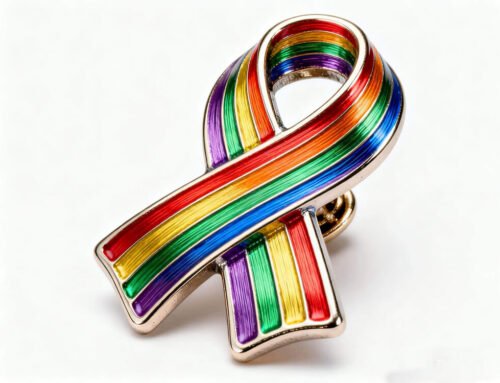Every custom pin begins its life as a block of steel, meticulously carved to become the master mold. But the way that mold is carved defines the pin’s entire character. Will it be a classic emblem with clean, graphic lines, or a lifelike sculpture with flowing, dimensional contours? This is the fundamental choice between a 2D and a 3D mold, a decision that impacts the pin’s look, feel, and cost.
This is your definitive guide to understanding this critical manufacturing decision. We will take you deep into the factory floor to explore the technology, the artistry, and the strategy behind both 2D and 3D molds. By the end of this comprehensive guide, you will be able to determine which process is the perfect fit for your design, your brand, and your budget, ensuring your final product makes the exact impact you envision. This is a key step in the creation process, which we cover in our Ultimate Guide to Custom Lapel Pins.
Table Of Contents
The Core Concept: What is the Difference Between a 2D and 3D Pin?
Before diving into the technical details, let’s start with a simple, direct answer. A 2D pin has a design with flat, distinct levels, typically one raised and one recessed, creating a clean, graphic look like a classic cartoon. A 3D pin, on the other hand, has a design with smoothly curved, rounded, and contoured surfaces, creating a realistic, sculptural, multi-level effect like the face on a coin.

Core Concept Comparison Table
Key Differences at a Glance: 2D vs. 3D Pins
| Feature | 2D Mold Pin | 3D Mold Pin |
|---|---|---|
| Surface | Flat levels, sharp angles, distinct raised/recessed areas. | Smoothly curved, rounded, and contoured surfaces. |
| Appearance | Graphic, clean, bold, classic “enamel pin” look. | Sculptural, realistic, lifelike, dimensional. |
| Best For | Logos, text, simple illustrations, most standard designs. | Faces, characters, buildings, vehicles, intricate textures. |
| Manufacturing | Simpler die-striking process. | Complex die-casting process. |
| Cost | Standard cost (more affordable). | Premium cost (significantly more expensive). |
The Factory Floor: A Deep Dive into How Each Mold is Made and Used
To truly appreciate the final product, it helps to understand the distinct manufacturing journeys behind 2D and 3D pins. The process itself dictates the pin’s final look, feel, and even the materials used.
The 2D Mold Process: The Art of the Strike
The 2D process is the foundation of the vast majority of custom pins. It’s an efficient and precise method for creating clean, graphic designs.
- Creating the Mold: It begins when a CNC (Computer Numerical Control) machine engraves a 2D vector file into a block of hardened steel. The machine follows the clean lines of the artwork to create a die with distinct, flat levels.
- The Manufacturing Process: Die-Striking. A powerful hydraulic press then takes this die and strikes it with immense force into a sheet of solid metal (usually brass, iron, or copper). This strike impresses the design into the metal, creating the clear raised and recessed areas. This process is the foundation for both classic, no-color die-struck pins and traditional enamel pins.
The 3D Mold Process: The Science of the Cast
Creating a 3D pin is a more complex and sculptural art form, requiring different techniques and materials.
- Creating the Mold: This process starts not with a flat file, but with a 3D digital model. A specialized, multi-axis CNC machine then spends many hours meticulously carving the flowing, contoured surfaces of this model into the steel mold.
- The Manufacturing Process: Die-Casting. Instead of stamping a solid sheet of metal, this process involves injecting molten metal—almost always a zinc alloy—under high pressure into the complex 3D mold.
- Why Zinc Alloy? Zinc alloy is the metal of choice for 3D pins because it has a lower melting point and excellent flowability. This allows it to fill every tiny crevice, curve, and subtle contour of the intricate 3D mold, perfectly capturing the sculptural detail.

Manufacturing Process Comparison Table
Technical Differences: 2D vs. 3D Manufacturing
| Feature | 2D Mold Process | 3D Mold Process |
|---|---|---|
| Starting Artwork | 2D Vector File (.AI, .EPS) | 3D Digital Model (.STL, .OBJ) |
| Mold Creation | Simpler, faster CNC engraving of flat levels. | Complex, multi-axis, time-consuming sculptural engraving. |
| Manufacturing Method | Die-Striking (Stamping solid metal) | Die-Casting (Injecting molten metal) |
| Primary Base Metal | Brass, Iron, Copper | 亜鉛合金 |
A Designer’s Guide: How to Approach 2D vs. 3D Design
To get the most out of your chosen manufacturing process, it’s helpful to design with its specific strengths in mind. Are you thinking in flat, graphic layers, or in sculptural, flowing depth?
Mastering the 2D Design: Creating the Illusion of Depth
Even within the “flat” world of 2D, you can create a powerful sense of dimension. This is sometimes referred to as a “2.5D” effect. By using multiple distinct levels—for example, a recessed background, a mid-level element, and a top-level element—you can add depth and visual interest to a standard 2D pin. Combining this with different metal plating options can further enhance this effect.
Mastering the 3D Design: Thinking Like a Sculptor
Designing a true 3D pin requires thinking about light, shadow, and form. The key concept here is “relief,” a classic term from sculpture.
- Low Relief: This involves subtle, shallow sculpting, like the profile of a face on a coin. The details are present but not dramatically raised.
- High Relief: This involves deep, dramatic sculpting with significant depth and shadowing, creating a much more prominent and lifelike effect.
Creating a 3D design requires a specialized 3D digital artist to build a model. This is not something that can be easily converted from a 2D logo. Our in-house design team includes 3D modeling experts who can work with you to translate your concept into a fully sculpted digital model, ready for mold creation.

The Strategic Choice: When to Use a 3D Mold
A 3D mold is a premium option, and it’s the superior choice in several specific scenarios where realism and a “wow” factor are paramount.
When is a 3D Mold the Right Choice?
| Use Case | Why 3D is a Better Fit |
|---|---|
| Faces, People, and Characters | A 2D pin can only create a flat, cartoon-like representation. A 3D mold captures the subtle curves of a face and the contours of a character, bringing it to life. |
| Buildings and Architecture | A 3D mold can accurately represent the perspective, depth, and intricate details of a building, creating a stunning miniature replica. |
| Vehicles, Machinery, and Products | To capture the sleek curves of a car, the complex machinery of an engine, or the specific shape of a product, a 3D mold is essential for achieving a realistic look. |
| Detailed Natural Textures | For designs that need to replicate organic textures like animal fur, tree bark, or the surface of a rock, a 3D mold creates a far more realistic and tactile finish. |
| Pinnacle Awards & Premium Gifts | For a top-tier award or a high-end corporate gift, the sculptural quality of a 3D pin provides an unmatched “wow” factor and a significantly higher perceived value. |
The Financial Reality: Why 3D Molds Cost More
It’s important to be transparent about the investment required for a 3D pin. The higher price tag is a direct result of the increased complexity at every stage of the process.
- Specialized Design Work: Creating a 3D digital model from scratch requires a specialized artist and significantly more design time.
- Complex Mold Creation: The CNC machining process for a 3D mold is far more intricate and takes many more hours of machine time than a standard 2D mold.
- The Die-Casting Process: The process of injecting molten metal is more involved and requires different equipment than simple stamping.
Because of these factors, you can expect a 3D molded pin to have a higher per-pin cost. The one-time mold fee is also significantly higher than for a standard 2D pin. For a full overview, consult our Complete Guide to Pin Pricing.
Conclusion: Choosing Between Clarity and Character
The decision between a 2D and a 3D mold is a strategic choice between classic, graphic clarity and realistic, sculptural character. A 2D mold is the perfect, versatile workhorse for the vast majority of designs, especially logos and text. A 3D mold is the specialist’s tool you bring in when you need to capture lifelike depth and create a truly unforgettable, high-impact piece.
By understanding the unique strengths and processes behind each option, you can now make a confident, informed decision that perfectly aligns with your design, your brand’s message, and your budget. This choice allows you to create anything from creative marketing tools to prestigious awards.
Frequently Asked Questions about 2D vs. 3D Pins
- Can my 2D logo be made into a 3D pin?
- Yes, absolutely! Our 3D artists can take your flat 2D logo and skillfully interpret it into a 3D model, adding depth, beveling, and texture to bring it to life in a sculptural form.
- Can you add enamel color to a 3D pin?
- It is possible, but it’s a very complex and often expensive process. Most 3D pins are left as all-metal designs, often with an antique finish, to best showcase the intricate sculptural details. Adding color can sometimes obscure the fine contours of the design.
- Is a 3D pin always “better” than a 2D pin?
- Not at all. They are simply different tools for different jobs. For a clean, bold corporate logo, a 2D pin is often superior because it’s more readable and graphically precise. 3D is only “better” when the goal is realism and sculptural depth.
- Does a 3D pin cost the same as a pin with moving parts like a spinner?
- The costs are often in a similar premium range, but for different reasons. A 3D pin’s cost comes from the complex mold. A spinner’s cost comes from manufacturing and assembling two separate pin parts. Both are considered high-end special effects.
Unsure if Your Design Needs 2D or 3D? Let Our Experts Advise You.
The line between a complex 2D design and a true 3D pin can be subtle. Our team of experienced designers can review your artwork and provide an expert recommendation on which process will bring your vision to life most effectively and within your budget.




